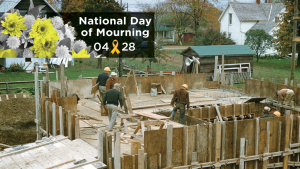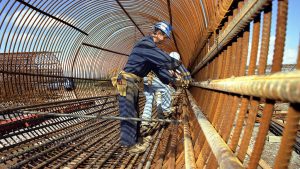TORONTO — A Brantford, Ont.-based firm that produces custom metal staircases for commercial buildings was convicted and fined recently for its role in the falling death of a worker on the job in Toronto in September 2017.
Eestairs America Inc. also operates out of Toronto. The jobsite was a project at the Eaton Centre on Yonge Street.
A Ministry of Labour release stated Eestairs was retained to design and install a feature metal staircase from the ground floor to the second floor of a project that involved the conversion and renovation of two retail units into one larger retail store.
Another contractor had previously cut an oval-shaped opening for the staircase out of the concrete on the second floor. The distance between the floors was about 20 feet. Two temporary steel I-beams had been installed above the opening, to be used as a hoisting device for the new staircase. A guardrail system had been installed around the opening.
Two workers were working in an area between the guardrail and the edge of the opening on the second level. One was using a self-retractable lanyard as part of a fall arrest system, which is designed to protect a worker from hitting the ground by detecting and arresting a fall.
The other worker wore a different, self-restricting lanyard that was anchored to one of the steel I-beams about six feet overhead.
The first worker, who had about 25 feet of lifeline slack, began to approach the second worker around the perimeter of the opening, then tripped, falling into the opening and catching the second worker’s rope. In doing so the second worker was pulled over the edge and through the opening.
The first worker’s lanyard did not activate and arrest the fall because it had been set up to allow for 25 feet of slack and the fall was to 20 feet. The worker fell about 11 feet onto construction materials that were on the ground floor, landing feet first, and was not injured.
The second worker’s lanyard also did not activate and arrest the fall. That worker fell headfirst about 17 feet, also struck construction materials that were on a different section on the ground floor and was pronounced dead at hospital.
Section 93(3) of the Regulation for Construction Projects prescribes that all vehicles, machines, tools and equipment shall be used in accordance with any operating manuals issued by the manufacturers.
The manuals for both of the lanyards specified that swing falls should be avoided by anchoring directly overhead. The manual for the deceased worker’s lanyard stated that swing falls can increase the fall distance and that line slack should not be permitted.
Both workers’ lanyards were set up in a way that work was being performed away from the natural hanging position of the lifeline, which would cause a swing fall for both workers, contrary to the instructions in the operating manuals for both lanyards.
The provincial court found that Eestairs failed as an employer to ensure that the measures and procedures prescribed by the Regulation for Construction Projects were carried out at the workplace, contrary to section 25(1)(c) of the Occupational Health and Safety Act. This is an offence pursuant to section 66(1) of the act.
Eestairs pleaded guilty and was convicted Oct. 22. The fine assessed by the justice of the peace was $105,000.










Recent Comments
comments for this post are closed